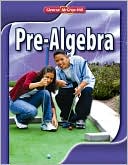
To find: The total possible ways to change a dollar
Answer to Problem 5P
Thetotal possible ways are 29
Explanation of Solution
Given:
Consider the values of dollar, quarter, dime and nickel in terms of cents as follows:
1 dollar =100 ȼ
1 quarter =25 ȼ
1 dime =10 ȼ
1 nickel =5 ȼ
Calculation:
Consider the values of dollar, quarter, dime and nickel in terms of cents as follows:
1 dollar =100 ȼ
1 quarter =25 ȼ
1 dime =10 ȼ
1 nickel =5 ȼ
Now, change for dollar could be in terms of single coin or in mix of them.
Comment
Step 2 of 3
Considering single coins,
1. 4 quarters make
2. 10 dimes make
3. 20 nickels make
Now, consider mix of 2 types of coins
4. Quarters and dimes: since dime involves factor of 10 quarters must have value which is factor of 10. Only combination of quarters between 25 ȼ and 100 ȼ (not including 100,as it has been included above ) 50 ȼ.
Thus, it will have 2 quarters and 5 dimes -1 way.
5. Quarters and nickels: Here, we can have 1 quarter, 2 quarters or 3 quarters in the mix
Thus − 3 ways.
6. Dimes and Nickels: Here we can have mix ranging from 1 dime to 9 dimes (as 0 and 10 arealready covered under single coins)
Thus - 9 ways.
Now, considering mix of all three types of coins as,
Various combinations are possible here,
7. with 1 quarter. With 25 cents gone, there can be 1 to 7 dimes (as 0 dimes is already considered under 2 type mix and 8 will exceed limit of $1)
Thus - 7 ways.
8. with 2 quarters: With 50 cents gone, there can be 1 to 4 dimes (as 0 and 5 dimes is alreadyconsidered under 2 type mix
Thus - 4 ways.
9. with 3 quarters: With 75 cents gone, there can be 1 to 2 dimes (as 0 dimes is alreadyconsidered under 2 type mix and 3 will exceed limit of $1 )
Thus there are 2 ways.
Counting all ways of all three scenarios,
The total possible ways are,
=29
Conclusion:
Hence, the total possible ways are 29
Chapter 0 Solutions
Pre-Algebra, Student Edition
Additional Math Textbook Solutions
University Calculus: Early Transcendentals (4th Edition)
Basic Business Statistics, Student Value Edition
Calculus: Early Transcendentals (2nd Edition)
Using and Understanding Mathematics: A Quantitative Reasoning Approach (6th Edition)
Precalculus
- How long will it take you to double your money if you invest it at a rate of 8% compounded annually?arrow_forwardOne hundred dollars is invested at 7.2% interest compounded annually. Determine how much the investment is worth after: a. I year b. 5 years c. 10 years d. 20 years e. Use your answers to parts (a)-(d) to estimate the doubling time for the investment.arrow_forward6) A farmer has 60 acres on which to plant oats or corn. Each acre of oats requires 100 lbs of fertilizer and 1 hour of labor. Each acre of corn requires 50 lbs of fertilizer and 2 hours of labor. The farmer has 5000 lbs of fertilizer and 100 hours available for labor. If the profit is $60 from each acre of oats and $100 from each acre of corn, what planting combination will produce the greatest total profit? a) Fill in the following chart to help organize the information given in the problem: Oats Labor Fertilizer Land Profit b) Write down the question of interest. Corn Available c) Define variables to answer the question of interest. Call these x and y. d) Write the objective function to answer the question of interest. e) List any constraints given in the problem.arrow_forward
- I need help with number 5.arrow_forward3) Use the following system of linear inequalities graphed below to answer the questions. a) Use the graph to write the symbolic form of the system of linear inequalities. b) Is (-4,2) a solution to the system? Explain. 5 -7 -5 -3 -2 0 2 3 4 $ 6 -2 -6 -7arrow_forward) Graph the feasible region subject to the following constraints. x + y ≤ 6 y ≤ 2x x ≥ 0, y ≥ 0 P + xarrow_forward
- Solve the following system of equations: 50x+20y=1800 10x+3y=300arrow_forward> > > we are hiring Salesforce Admin Location: Remote Key Responsibilities: Administer Salesforce Sales & Revenue Cloud (CPQ & Billing) Configure workflows, validation rules & dashboards Automate processes using Flows & Process Builder Collaborate with Sales, Finance & Marketing teams Manage user roles & security Apply: Hr@forcecraver.comarrow_forwardAnswer this questionarrow_forward
- 1. vector projection. Assume, ER1001 and you know the following: ||||=4, 7=-0.5.7. For each of the following, explicitly compute the value. འབ (a) (b) (c) (d) answer. Explicitly compute ||y7||. Explain your answer. Explicitly compute the cosine similarity of and y. Explain your Explicitly compute (x, y). Explain your answer. Find the projection of onto y and the projection of onto .arrow_forward2. Answer the following questions using vectors u and v. --0-0-0 = find the the cosine similarity and the angle between u and v. འརྒྱ (a) (b) find the scalar projection of u onto v. (c) find the projection of u onto v. (d) (e) (f) find the scalar projection of onto u. find the projection of u onto u. find the projection of u onto and the projection of onto . (Hint: find the inner product and verify the orthogonality)arrow_forwardPlease type out answerarrow_forward
 Algebra and Trigonometry (6th Edition)AlgebraISBN:9780134463216Author:Robert F. BlitzerPublisher:PEARSON
Algebra and Trigonometry (6th Edition)AlgebraISBN:9780134463216Author:Robert F. BlitzerPublisher:PEARSON Contemporary Abstract AlgebraAlgebraISBN:9781305657960Author:Joseph GallianPublisher:Cengage Learning
Contemporary Abstract AlgebraAlgebraISBN:9781305657960Author:Joseph GallianPublisher:Cengage Learning Linear Algebra: A Modern IntroductionAlgebraISBN:9781285463247Author:David PoolePublisher:Cengage Learning
Linear Algebra: A Modern IntroductionAlgebraISBN:9781285463247Author:David PoolePublisher:Cengage Learning Algebra And Trigonometry (11th Edition)AlgebraISBN:9780135163078Author:Michael SullivanPublisher:PEARSON
Algebra And Trigonometry (11th Edition)AlgebraISBN:9780135163078Author:Michael SullivanPublisher:PEARSON Introduction to Linear Algebra, Fifth EditionAlgebraISBN:9780980232776Author:Gilbert StrangPublisher:Wellesley-Cambridge Press
Introduction to Linear Algebra, Fifth EditionAlgebraISBN:9780980232776Author:Gilbert StrangPublisher:Wellesley-Cambridge Press College Algebra (Collegiate Math)AlgebraISBN:9780077836344Author:Julie Miller, Donna GerkenPublisher:McGraw-Hill Education
College Algebra (Collegiate Math)AlgebraISBN:9780077836344Author:Julie Miller, Donna GerkenPublisher:McGraw-Hill Education





